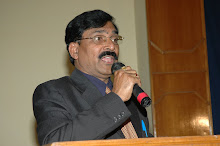I was there with Sodhana for a decade contributing to the empowerment of rural women through land ownership rights :
We at Sodhana as a mandate worked on micro-land ownership Initiative that rural house holds including landless women agricultural laborers and their families in rural Vizianagaram and Srikakulam districts in AP obtain secure rights to land—the single greatest source of their income, status, nutrition, and wealth—in order to substantially improve their livelihoods and alleviate poverty.
Our perception on Women and Land at Sodhana in eighties Our land work has focused on empowering women through land ownership because land, we realized, meant to women:
L= Life-line (Salvation, Sentiment and Sustenance)
A=Asset (Social Status, Security and Safety)
N= Natural (Availability, Accessibility and Acceptability)
D=Development (Equity, Economic power and Energizer)
And we also observed that
Women comprise a disproportionate share of the landlessand rarely hold legal rights to land;
The oppressive practice of dowry is integrally linked with women’s inferior access and rights to land; and
Providing women with legal rights to land should increase their status and social and economic security.
Based on these findings, Sodhana strived to enhancing women's access and rights to land. Our work included changing state procedures to require government-distributed land to be granted jointly to husbands and wives or independently to women and proper records and documentary and physical possession of the lands meant for them.
Sodhana directly assisted the state through district authorities to provide micro-plots to landless women agricultural laborers and their families (approximately 35,000 thousand families) and thus enabled the most marginalized to meet their basic needs and invest in their future.
The focus was on to provide land access and improved land rights to the rural poor, women, and other marginalized groups. The centerpiece is in Sodhana’s work was urging if not demanding state government in AP allocate government lands , lands acquired under land reforms and small house-and-garden plots to the rural landless especially women in these two backward districts bordering Orissa .
The gravity of situation
As Action Researchers we have learnt that poverty imposes oppressive weight especially in rural areas where close to 80 percent of the poor live. Despite decades of efforts at poverty alleviation, the absolute number of poor has doubled since Independence in 1947. We have the greatest concentration of rural households that are totally landless. Landlessness and rural poverty are closely linked.
Rural women feel the weight of poverty the most. Females are more likely than males to die as infants and children. Most significantly, women rarely have legal rights to land, despite the fact that they are often more engaged in agriculture than men. In our action research we on one side had consciously encouraged policy-makers to put land distribution and reform issues back on the agenda in rural development process and on other side organized people for power to secure the land rights .
The Process
Sodhana worked with partners including key government actors, selected research institutions-NIRD , and NGOs to study, develop, communicate, and helped implement feasible program , policy, and administrative reforms as far as land to poor was concerned Work to date has consisted of a series of field studies, reports, interface if not encounters , and other advisory and field level pressure activities. This work has pointed to a set of new, practical measures of course which were not smooth any way , that promised to provide meaningful land rights to the rural poor, women, and other marginalized groups. These included:
Allocating house-and-garden plots to impoverished landless laborers especially women ;about 2000 families
Facilitating construction of weaker section housing on the assigned lands by women , of the women and the for the women about 3000 houses
Revisiting tenancy procedures to increase the rural poor’s access to land 10,000 farmers mainly from SC/ST categories ;
Providing independent or joint titling of land and other protections for women mainly from SC/ST categories;
Turning informal “possessors” into formal owners mainly from SC/ST categories about 2000 owners ; and
Arranging assignment , distribution and possession of D patta lands under ROR –Record of Rights in these two districts
Arranging for restructuring of land boundaries of the poor in almost all villages in our operational area
Arranging for assignment , distribution and possession of Land Reform lands for the poor from Benami (Fake ) possessors from upper strata mainly from SC/ST categories
Arranging Patta Pass Books (Land Record pass books )to the poor under ROR to all farmers
Making land markets work better for the poor by streamlining the procedures and checking the exploitative tendencies.
Roping in public institutions to help women land owners to create viable livelihoods and land based sustenance
Saturday, July 4, 2009
Subscribe to:
Post Comments (Atom)

No comments:
Post a Comment